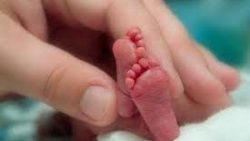
Mandibular Fractures in children
Zoe Nikolaou: Oral and Maxillofacial Surgeon, Private practice in Limassol
The Lingual Splint in the Management of Mandibular Fracturesin children.
Treatment of mandibular fractures in children is controversial. The presence of developmental dental follicles not only leads to irregular fracture lines but precludes the use of intraosseous fixation. Also, in cases of condylar fractures, the activating growth centers in the condyle can lead to facial deformities and possibly ankylosis. Therefore the period of intermaxillary fixation should be reduced to a minimum.
In this study is presented the results of long-term follow up in a series of young patients with mandibular fractures, treated by lingual splint. The advantages and disadvantages of the technique are discussed.
Mandibular fractures are common facial injuries which occur twice as frequently as midfacial fractures (Kelly DE, Harrigan, 1975, WF Adekeye E.O. 1980, Ellis et al 1985, Richardson ML, 1994). A study by Hang et al 1990 showed a 6:2:1 proportion among mandibular zygomatic and maxillary fractures.
Pediatric maxillofacial fractures are relatively uncommon and different reports have stated that the incidence varies between 1.4 % and 15.0 % of all maxillofacial fractures, ( Steinhardit 1962, Rowe 1969, Velos et al 1969, Kiyota 1976, Nobuyuki 1993, Richardson ML 1994, Kaban 1993 And Posnick 1993). In pediatric patients, the mandible is considered the most frequent site of fractures also (Nobuyuki T, 1993) and accounts for 34-49% of all facial fractures. Approximately 1% of all mandibular fractures have been found to occur before the age of 6 years and only 3-6% of all mandibular fractures occur before the age of 10 (Mac Lennan 1956, Howe 1969, Nicolas H 1993).
The anatomic distribution of mandibular fractures in children differs greatly from that of adults. The mandibular condyle is the most commonly injured area, accounting for 64% of incidents, whereas the combined condylar-mandibular body fractures account for 16% and the isolated body fractures – 20% (Nicolas H 1993, Posnick 1993). The incidence of condylar fractures in children has been shown to decrease as age probably because in earlier age groups, the main cause of fracture is a fall, whereas older children are involved in bicycle and motor vehicle accidents.
Treatment of mandibular fractures in a child is affected by the location, the degree of displacement and malocclusion, and also from the unique anatomy of the child’s mandible.
Some anatomical considerations should be mentioned for better understanding of the unique features of pediatric mandibular fractures, as well as the management in this group of patients.
The presence of unerupted permanent teeth results in a high tooth: bone ratio, which encourages irregular fractures though the developing dental follicles, and makes internal fixation more difficult.
The anatomic shape of primary as well as the various degree of root resorption make intermaxillary fixation less suitable. The higher cancellous / cortical ratio in children’s’ which will then be a greenstick rather than complete fracture.
Since the healing potential of the child is greater than in the adult, stabilization is required at an earlier time, the immobilization period is less and non-union rarely occurs.
Owing to the shape of the mandibular condyle in children, Lack of condylar neck length and greater cancellous/cortical ratio, they are more susceptible to crushed injuries. In addition, mandibular condyle has traditionally been held responsible for mandibular growth. For those reasons, condylar fractures can result in growth disturbances and facial asymmetry.
Children are also more susceptible to ankylosis in instances of intracapsular or subcondylar fractures which produce hematoma within the joint space. Therefore the period of intermaxillary fixation should be reduced to a minimum, from 1-2 weeks, depending on the age and degree of displacement.
From the treatment methods available, open reduction and internal fixation of a mandibular body or symphysis fracture is usually avoided, in order to prevent damage to the developing tooth buds. In addition, the effect of surgery upon subsequent growth must be considered, taking into account the disruption of soft tissue and periosteum at open reduction. Closed reduction and fixation for mandibular fractures in a child is recommended. This could be accomplished either by a splint or a combination of a splint and intermaxillary fixation. Closed reduction and alignment of mandibular body fracture in a child can be accomplished manually or with the help of a splint. The fixation is made by the use of a splint with circumandibular wires, which can be intra-arch or interarch accompanied by skeletal intermaxillary fixation. Condyle fractures very seldom necessitate open reduction. The treatment indicated is reduction of the occlusion with inter-maxillary fixation with the aid of a splint, and early restoration of function by physiotherapy.
The splint is the preferred treatment in mandibular fractures in children for the following reasons: splints can reduce the time or eliminate the need for I.M.F. This is of great importance in growing patients, in helping to avoid ankylosis and growth disturbances. Furthermore, children will not easily tolerate having their jaws wired together. The possibility of aspiration of vomit is an additional concern. With a splint, an open reduction can be avoided and therefore no damage is caused to tooth buds.
Transverse or vertical mandibular displacement due to muscle pull can be prevented by the rigid stabilization of the applicance. Alignment of the dentition and occlusion can be maintained when multiple fractures or comminution is present. In condylar fractures the use of the splint restores the reduced vertical height.
Two kinds of splint are discussed for the treatment of mandibular fractures in children: the impression tray splint and the acrylic splint. First we will discuss: The Impression Tray: technique, construction and application: After a mandibular fracture is diagnosed in a child and decision is made for surgical intervention, the child is prepared for general anesthesia, with nasal intubation. The technique used is as follows:
A disposable, plastic mandibular impression tray of the type commonly used for impressions is chosen. It is penetrated and roughly trimmed with scissors to fit the child’s mandibular process. It is important to trim the tray to a length sufficient to extend at least one centimeter beyond the fracture line. Posteriorly, the splint should extend to the ascending ramous. A block of thermoplastic impression compound is softened in hot water and pressed into the impression tray.
The facture is manually reduced and the tray is pressed into place over the mandibular ridge and held in place until the compound cools. The tray is taken out, to trim the excess of compound and a lined with Goutaform. This way, the possibility of decubitus is reduced. Stainless steel 0.4 mm circumandibular wires are used to fix the splint in place and immobilize the fragments in reduced position. A period of about 3 weeks is usually sufficient to allow for union of the fractured segments. The splint is then removed and normal function should be resumed immediately in order to minimize post-operative complications and to allow for proper healing. For the construction of the acrylic splint alginate impressions are necessary. These are made with the use of Alginate and routine metal or plastic impression trays. The tray is carefully removed to prevent displacement of the fractured segment and additional soft tissue injury. The impressions are poured into dental stone. The case is subsequently sectioned at the fracture site and the segments are realigned with wax so that the proper dental occlusion is obtained.
The splint is constructed by self polymerizing cold curing polymethacrylate. A roll of material is placed over the aligned dentition on the case. The acrylic splint can be constructed by several modifications, depending on the demands of the particular case. For example, if an isolated mandibular body or symphysis fracture exists, like in this case, the splint can be bucca-lingual, resembling a more delicate impression tray splint. If IMF is required in an older child then a lingual only extension with the occlusion conduct surfaces of the upper teeth is prepared.
In condylar fractures, where vertical height is reduced, the splint is made thicker at the posterior areas and thinner anteriorly. The rough splint is separated from the cast and trimmed by hand piece. Polishing is accomplished and the grooves necessary to secure the splint to the mandible are placed as seen in the slide. The splint is stored in antiseptic solution.
To avoid prolonged general anesthesia during preparation of the splint at the laboratory, it is recommended to take the impression with the patient in deep sedation. Caution must be taken to keep the reflexes of the child.
Following this, with the patient under general anesthesia, manual reduction of the fractured mandible is made. The splint is secured by circumandibular wiring.
The techniques outlined above provide several advantages:
Fist of all the lingual extension of the splint and its excellent tissue adaptation provides adequate stabilization and prevents vertical as well as horizontal displacement of the fracture.
Secondly with this appliance the child is subjected to an easy and less traumatic procedure.
Thirdly this technique eliminates he need for intraosseous wiring and open reduction.
Finally with this technique, if a condyle fracture is combined with mandibular body fracture, rigid stabilization of mandibular body fracture is achieved while early mobilization of the condylar fracture is obtained.
Disadvantages:
These include: The need for the general anesthesia at the stage of splint removal, decubitus of the tongue and cheek especially when the improvement tray is used, as well as chewing disturbances.
This study includes thirteen children up to the age of 14 years, who had mandibular fractures which were treated with a splint.
On the left graph, you can see that most patients were boys. The right graph shows the anatomic distribution of the fractures. It is important that in seven out of thirteen cases, there was a condylar fracture and most of the mandibular body fractures were located at the symphysis – para – symphysis area.
Cases of isolated mandibular body fractures were treated by impression tray splint whereas cases which involved condylar fracture and the need of IMF were treated by acrylic splint. The impression tray was used more in younger children.
As a conclusion, the splint is a valuable and convenient method for treating mandibular fractures in children. All our patient show excellent postoperative results. No complications including infection, non-union, functional or growth disturbances, were experienced.
Impression tray – younger children isolated body factures.
I.M.F wasn’t necessary b/c of a) better adaptation
b) Inconvenient for I.M.F.
Acrylic splint in case of I.M.F in older patients where the anatomy of the permanent teeth provide better stabilization.
 Αγγλικα
Αγγλικα Ελληνικα
Ελληνικα
 Twitter
Twitter Facebook
Facebook Pinterest
Pinterest


